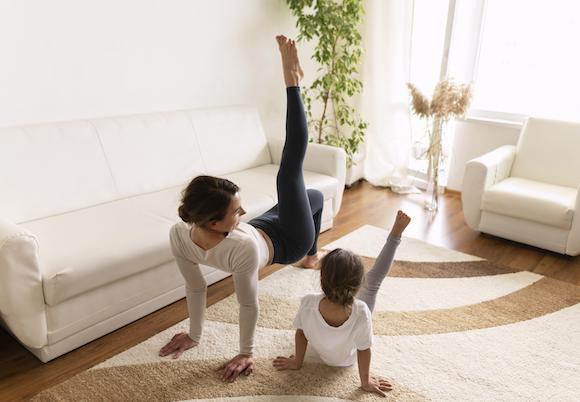What Exactly Is Foam Rolling, Why Should You Do It, and Where To Begin.

Photo by Alora Griffiths on Unsplash
Have you ever walked into the gym and seen those people lying on top of glorified pool noodles and wondered what in the heck they were doing?
Did you try foam rolling yourself and find the process excruciatingly painful?
Foam rolling, roughly five years ago, was a sort of fringe recovery method, not a lot of evidence existed to back it up other than the anecdotal kind, and most trainers didn’t know a lot about it. In the last five years, the research has ballooned out, and we are beginning to understand more about how it works.
Now, every gym you go into has a set of foam rollers and it’s become an integral part of many people’s workout routines.
Foam rolling, or the external compression on your muscles, stimulates the sensory receptors, or proprioceptors, in your muscles, fascia, and connective tissues. Similar to a massage, foam rolling breaks up myofascial adhesions (or knots, or trigger points), mobilizes the muscle tissues, and encourages better overall movement. This can have positive effects on range of motion and flexibility if done correctly.
There’s also a neurophysiological response, meaning your autonomic nervous system is stimulated from foam rolling, reducing tension in your muscles, and also reducing the stress response.
If you’ve never foam-rolled before, I wouldn’t recommend just jumping on any ole foam roller you can find and cranking out sore muscles. If you don’t do it correctly, you are likely not benefiting yourself at all and maybe even doing more damage than good.
Here’s a good place to start...
First and foremost, choose the right roller.
If you go online, there are a bazillion different options. I’m hardly being sarcastic. So, which one is the best one for you?
The right answer: What feels good for YOU.
If you ever got on a foam roller and the process was excruciating, the roller you were on was probably too dense. If you tense up your muscles, then you are not encouraging the reduction of tension and increased circulation and mobility, like the world of foam rolling promises you. If you feel like you need to hold your breath or your breathing gets quick and shallow, then you are triggering a stress response from your sympathetic nervous system, which will also inhibit the healing process you seek.
Honestly, start with a pool noodle if the dense rollers make you cringe. They are $16 for a 5-pack on Amazon of the cheapest kind, and it will trigger the exact same response as the fancy ones that you can upgrade to later on if you really start to dig this process.
Start with foam rolling as a sort of meditation for your muscles.
Start with the goal of simply reducing tension.
Foam roll for a few minutes to calm down; long, slow strokes up and down your main muscle groups. Foam rolling correctly initiates a parasympathetic nervous system response or your rest-and-digest state of being. When your parasympathetic nervous system is active, healing takes place, so tense, sore muscles can be relieved.
Foam roll where you feel the most tension.
Do you sit at a desk all day? Then foam roll up and down the back to release tense back muscles, mobilize your vertebrae, and release tension all the way up through the neck and head. Foam roll the glutes to bring movement back to the area in which your body rests on all day.
Foam roll your legs to release tension in the hips and ankles with long, slow strokes up and down your quads right up to (but not over) your hip bones, over your tibialis anterior (or that fleshy part of your shin next to the protruding boney area) for ankle tension or if you are a runner or avid walker.
If you work on your feet all day, foam roll your glutes (buttocks), hamstrings, IT bands, and calves.
But only foam roll where and to a pressure that feels GOOD. If you begin to hold your breath or feel any pulsing, numbness, tingling, or shooting pain, then stop.
Since this process is meant to trigger relaxation, try it for a few minutes at the end of the day as a means to unwind when you get home from work, before you go to bed, or as you’re starting the next episode of Queen’s Gambit on Netflix.
Once you have the basics down, think about what your goals are, and use the foam roller to help you achieve them.
Do you want more flexibility? Better range of motion? Better workouts with less recovery time afterward? Studies show the immediate benefits of foam rolling last anywhere from a couple of minutes to ten to fifteen minutes.
Okay, that doesn’t seem like that much time, so what’s the point?
The point is what you do with that ten minutes of increased mobility.
If you want to increase flexibility, foam roll the desired area, then stretch, and this will help the results of both the roll and the stretch last longer.
This study was able to demonstrate that foam rolling increased flexibility in the quadriceps and hamstrings more effectively than dynamic or static stretching alone.
If you are looking to recover faster from your workouts so you can hit the gym again, make foam rolling after your workouts an integral part of your recovery. Roll out the muscle groups that got the most work that day or are more susceptible to getting sore the following day.
This study showed in a group of physically active males, foam rolling post-workout moderately to substantially decreased DOMS (delayed onset muscle soreness), and even showed some improvements to things like their sprint time, power, and endurance.
Once you’ve got the hang of foam rolling down and decided it’s for you, you can use it as an aid to your massage therapy treatments to help maintain changes in the muscle tissue that you and your therapist are working on.
As you foam roll a particular muscle group, you may feel “sore spots.” These may be trigger points, or "knots," or just some sort of general myofascial adhesion or restriction. Stop the roller on this sore area, take a few deep, slow breaths, and hold it until the intensity of that soreness decreases, then do a few more long, smooth strokes over that muscle to encourage blood flow to the area.
If you hit a sore area and don't feel any substantial changes after about 30 seconds, move on. Muscles sometimes have a mind of their own and their moods can change day to day, just like ours. Somedays, certain muscles may not want to release. Listen to your body and honor what that muscle needs. Don’t force it to relax if it just wants to sit there in pain. Do a few long strokes over that muscle, and move on.
When should you NOT foam roll?
There aren’t a lot of studies on this question specifically, but the general industry consensus is those who shouldn’t get a massage, shouldn’t foam roll.
If you have issues with blood clotting or circulatory issues, don’t foam roll.
If you are pregnant, consult with your doctor.
As we are taught in massage therapy school: When in doubt, refer out. If you have any doubts about a condition you have and how this might affect you, talk to your doctor first! Don’t start any self-diagnosed medical program you found on the internet just because someone wrote an article about it on a blog, ESPECIALLY if you have any sort of pre-existing condition. Roll safely, friends.












If you enjoyed this article or recipe, please consider giving it a comment! It helps others discover my blog and recipes, and your comments always make my day :) Thank you for your support!
Your email address will not be published. Required fields are marked *